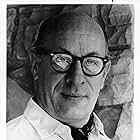A brief examination of the perplexing subject called time, told in storybook fashion.A brief examination of the perplexing subject called time, told in storybook fashion.A brief examination of the perplexing subject called time, told in storybook fashion.
Photos
- Directors
- Writers
- All cast & crew
- Production, box office & more at IMDbPro
Storyline
Did you know
- TriviaWarner Bros. produced four shows of the Bell Science series and frequently borrowed clips from its famous travelogue shorts and occasional features dating back the 1930s. One brief black and white clip of a map is rumored to be from 1940's THE SEA HAWK.
Featured review
All eight of the Bell Science shows featuring Frank Baxter are fun to watch today, despite some of the material being somewhat dated. (The shows reflect their age mostly when it comes to electronic technology. The computerized machines from the Eisenhower and Kennedy eras are often quite "prehistoric".) The four later installments, produced by Warner Brothers, are especially enjoyable on account of their outlandish sets and art direction. In this one, we take an imaginary visit to the "Planet Q" where the inhabitants are just like we humans and hold court with a king on his throne. The "plot" involves setting the "royal" clock and needing a "time" to start with. Conveniently, Frank Baxter is available with an observatory peeping out to Earth and is able to give a detailed description of what "time" is.
Subjects covered include a history of clocks starting with sticks-in-the-ground, sun dials, calenders, Galileo's first use of the pendulum in 1583, the use of quartz crystals and, in the 20th century, atomic energy for modern clocks. The seasons are briefly studied, along with how plants, snowshoe hares and hamsters use their own "clocks". Uranium properties aid paleontologists in "dating" fossils and studying the earth's age.
The best segments involve Einstein and his relativity principle. Carl Sagan's "Cosmos" series in 1979-80 covered similar material in live-action (and considerably more detail), but the cartoon footage gets the point across quite well. Two twin brothers... one an astronaut traveling the speed of light and the other staying on Earth age 60 years differently, because time is different in outer space with different "laws" in effect.
Like all of the programs, there is a great finish. This time, the Big Bang theory is presented with delightful slushy orchestration and the all-too-familiar passage is borrowed from Ecclesiastes (later done by the Byrds in song). It is an appropriate ending to the very last Bell Science special (with Baxter starring), since the Warner-produced specials didn't delve into scripture like the earlier Frank Capra productions (such as OUR MR. SUN and HEMO THE MAGNIFICENT).
Subjects covered include a history of clocks starting with sticks-in-the-ground, sun dials, calenders, Galileo's first use of the pendulum in 1583, the use of quartz crystals and, in the 20th century, atomic energy for modern clocks. The seasons are briefly studied, along with how plants, snowshoe hares and hamsters use their own "clocks". Uranium properties aid paleontologists in "dating" fossils and studying the earth's age.
The best segments involve Einstein and his relativity principle. Carl Sagan's "Cosmos" series in 1979-80 covered similar material in live-action (and considerably more detail), but the cartoon footage gets the point across quite well. Two twin brothers... one an astronaut traveling the speed of light and the other staying on Earth age 60 years differently, because time is different in outer space with different "laws" in effect.
Like all of the programs, there is a great finish. This time, the Big Bang theory is presented with delightful slushy orchestration and the all-too-familiar passage is borrowed from Ecclesiastes (later done by the Byrds in song). It is an appropriate ending to the very last Bell Science special (with Baxter starring), since the Warner-produced specials didn't delve into scripture like the earlier Frank Capra productions (such as OUR MR. SUN and HEMO THE MAGNIFICENT).
- jlewis77-1
- Mar 31, 2010
- Permalink
Details
Contribute to this page
Suggest an edit or add missing content





